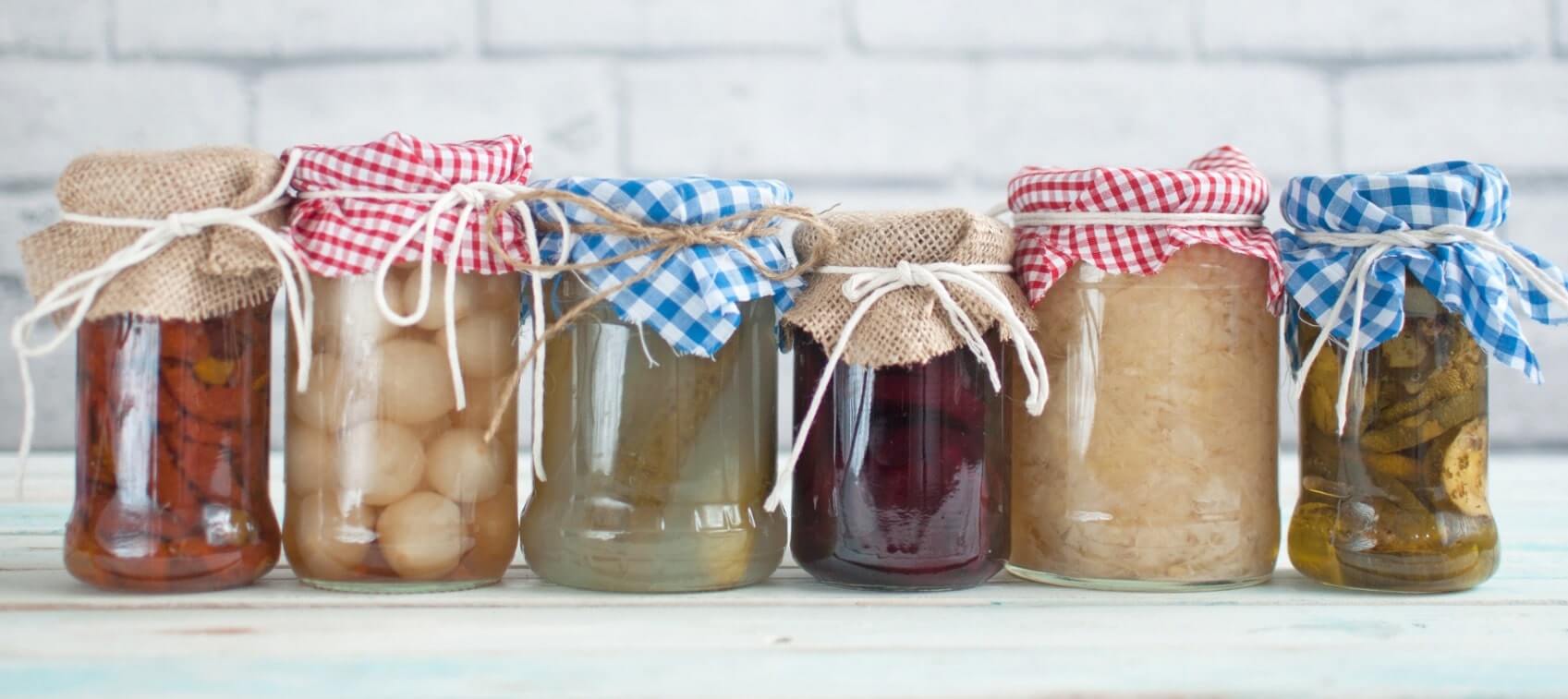
I first started making fermented foods back in 2003 after I read Sally Fallon’s book Nourishing Traditions. As the president of the Weston A Price Foundation, Sally Fallon reveals that food, particularly the way in which it’s prepared, truly is medicine. From reading her cookbook, I learned how indigenous cultures from around the world prepared and ate food, which was radically different than what I was taught growing up in the States. Soaking grains overnight before you cook them? Allowing vegetables to ferment for weeks? These were approaches to food that I never knew.
As a child, I recall eating sauerkraut, a well known fermented food, on top of hot dogs at baseball games. But other than sauerkraut, I rarely ate any other fermented foods until I read Nourishing Traditions and attended Naturopathic Medical School, when I began to learn about the amazing health properties of these foods. And once I started preparing them on my own, I began to appreciate more the complexity of tastes, aromas, and textures these foods offered. I’ve been hooked ever since.
You may be asking yourself what are fermented foods, and why are they so good for the body. The following list is by no means exhaustive, but does include the most popular fermented foods available from farmers markets, in grocery stores, or online. Of course, you can make all of these at home.
- Sauerkraut
- Kim Chi
- Beet Kvass
- Kefir
- Yogurt
- Miso
- Pickled vegetables
- Kombucha
- Pickles
- Tempeh
- Alcohol
- Cheese
- Bread (sourdough)
Yes, you read those last three correctly. Alcohol, cheese, and bread when prepared properly in the right conditions, are considered fermented foods. If you have ever tasted a properly fermented cheese or loaf of bread from a Farmers Market, you may have noticed that you digested it more easily compared to conventional cheese or bread. The difference is that fermented foods are generally easier to break down as the organisms are responsible for pre-digesting the food and making nutrients more available. I have friends that can only eat sourdough bread (fermented) as this is the only form of wheat that their digestive system can handle.
The unfortunate reality is that the majority of the fermented foods and drinks listed above are mass-produced with profits in mind, and do not actually contain beneficial organisms (think probiotics). Why? Because in order for these foods and drinks to be shelf stable, they must be pasteurized and heated to very high temperatures to kill any potential pathogenic microorganisms. By doing so, the health-promoting, friendly bacteria and yeasts are destroyed.
If you do want to consume authentically fermented varieties of these foods and drinks, you will likely need to buy locally from a Farmer’s Market or make them at home. Sometimes naturally fermented products are also available at Whole Foods, Food Co-Ops, or other natural health food stores.
What is Fermentation?
Fermented foods and drinks are formed via the process of fermentation. I really like how Rene Redzepi and David Zilber, authors of The Noma Guide to Fermentation, define fermentation:
Fermentation is the transformation of food by microorganisms—whether bacteria, yeasts, or mold. To be slightly more specific, it is the transformation of food through enzymes produced by those microorganisms. And finally, in the strictest scientific definition, fermentation is the process by which a microorganism converts sugar into another substance in the absence of oxygen.
Cultures from around the world have been preparing and eating fermenting foods for thousands of years. The process of fermentation has allowed people to preserve food for extended periods of time and to prevent food spoilage. For example, until the last century, fresh foods year-round were not as readily available, and fermenting foods became a convenient method to store food during the fall and winter months.
Typically, vegetables ferment spontaneously without assistance as bacteria are found on the surface, but starter cultures can be used. Starter cultures can help accelerate the fermentation process and are used to prevent spoilage as well as reduce the growth of pathogenic organisms. I do use starter cultures when making drinks like Kombucha, but all of my lactic acid fermented vegetables (e.g. sauerkraut) are fermented naturally.
Health Benefits of Fermented Foods
Fermented foods contain live organisms called probiotics that are made up of yeasts and bacteria. According to the World Health Organization, probiotics, when “administered in adequate amounts, confer a health benefit on the host.” In addition to providing a source of probiotics, fermented foods also help with the following:
- Enhance the nutritional value of foods
- Help with food preservation
- Help “pre-digest” certain food components
- Assist in the production of enzymes and B-Vitamins
- Reduce phytic acid levels (an anti-nutritional compound)
- Produce anti-microbial end products that have far reaching effects in the body
A Simple Recipe For Making Sauerkraut at Home
Are you ready to make some sauerkraut at home? You’ll be amazed at how fun and entertaining this process can be. There is no right or wrong way to ferment foods, but there are some basic guidelines to follow to prevent contamination and spoilage. Here are some tips that I’d like to share.
- Make sure you regularly wash your hands
- Use clean counters and cutting boards
- Thoroughly clean containers and other equipment before use
- Make sure temperature is within acceptable range (not too hot, not too cold)
I learned about this sauerkraut recipe from Sandor Katz, author of Wild Fermentation. I have used many of his recipes with great results, and his book is an excellent resource to learn more about the history of fermented foods. Depending on the temperature of your home and taste preferences, this fermentation can take 1-4 weeks to complete.
You will need the following equipment and ingredients:
- Ceramic crock or food-grade plastic bucket (1-gallon capacity or greater though some use 4- or 5-liter (or larger) glass largemouth mason jars)
- Plate that will be placed on top of kraut that will fit inside crock, bucket, or jar
- Something heavy to place on top of plate (jug of water, scrubbed and boiled rock)
- Cloth cover (hand towel, pillowcase, etc.)
- 5 pounds of cabbage
- 3 tablespoons of sea salt
Here is how you make kraut:
- Wash and then chop, shred (food processer), or grate cabbage finely or coarsely. Remove hearts.
- As you add cabbage to crock, bucket, or jar sprinkle salt on the cabbage. The salt helps draw out water from the cabbage to form the brine. If house is really warm, then add more salt. If house is cold, then add less salt.
- Use a clean fist or other object to pack down kraut into container. I suggest you do this for 10-15 minutes or longer to get the brine to rise.
- Cover the kraut with a plate and place weight on top of plate. You can firmly apply downward pressure to help force more water out of the cabbage.
- Repeat steps #3 and #4 every couple of hours until the brine has completely covered the top of the plate. If for some reason there is not enough brine to cover the plate by the next morning, you can add 1 tablespoon of salt to 1 cup of water and add to existing brine.
- Cover the crock, bucket, or jar with cloth and rubber band and allow to sit protected somewhere in kitchen.
- Check the kraut every day or so. Sometimes, a film will form on surface, and you will want to take a clean spoon to scoop off this film. Taste the kraut and notice how it changes with time. When taste and texture are ideal, remove kraut into smaller jars and store in the fridge.
- Enjoy a small amount with every meal.
Sauerkraut Tips
Over the years I’ve found that not all ferments are created equal. Fermentation is a process that sometimes we have no control over, so if something seems off then (e.g. mold formation,) use your discretion and discard batch if necessary.
- Fresh, local cabbage seems to work best. I prefer green, but sometimes add red cabbage for added color.
- While making the kraut, feel free to add spices like caraway seeds, celery seeds, or juniper berries. You can also add other cut up vegetables like onions, garlic, beets, turnips, and burdock root, or cut up fruits like apples.
- The temperature of your home makes a world of difference in terms of how long the ferment takes. I prefer to ferment in the spring and summer months as the warmth speeds up the fermentation.
- Don’t give up if your first batch is a dud. Use this as a learning experience and know that even the expert fermenters have failed batches.
Resources:
Fallon, Sally. Nourishing Traditions. New Trends Publishing. Washington, DC. 2001.
Katz, Sandor. Wild Fermentation. Chelsea Green Publishing Company. Vermont. 2003.
Redzepi, R., Zilber, D. The Nora Guide to Fermentation. Artisan Publishing. New York. 2018.
https://foodandnutrition.org/winter-2012/history-health-benefits-fermented-food/
https://www.ncbi.nlm.nih.gov/pmc/articles/PMC4303846/
https://sciencebasedmedicine.org/everything-you-always-wanted-to-know-about-fermented-foods/


